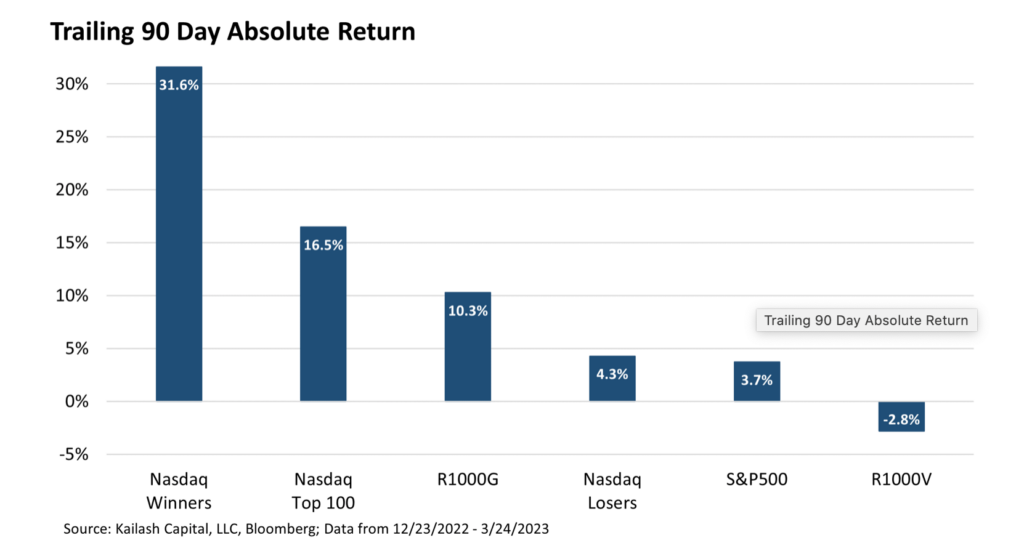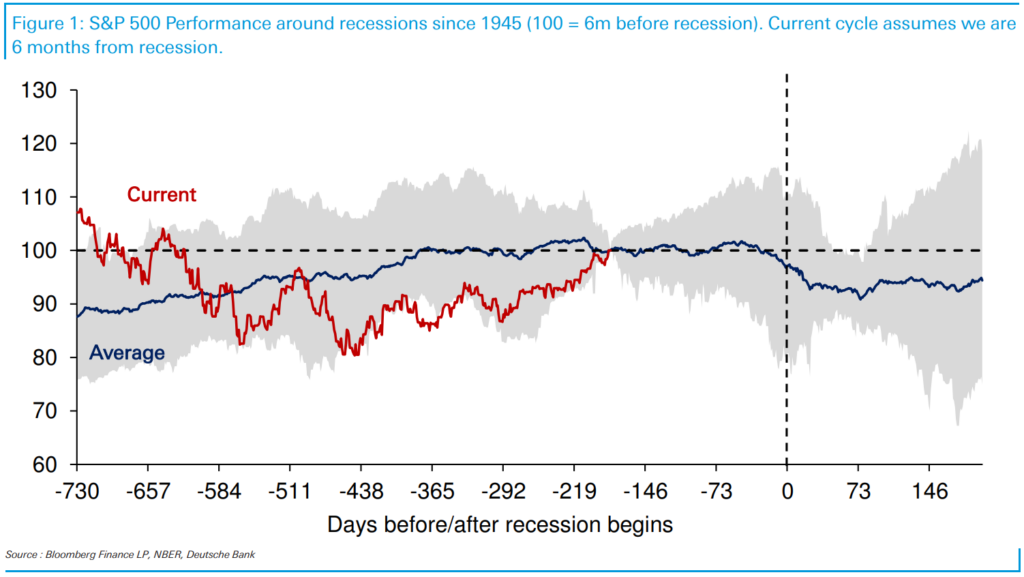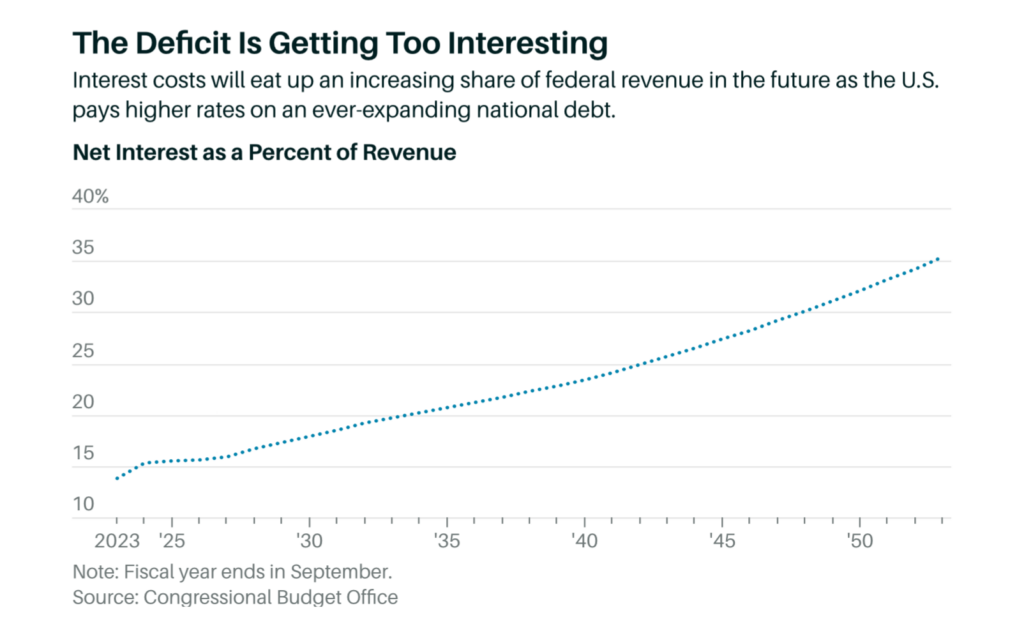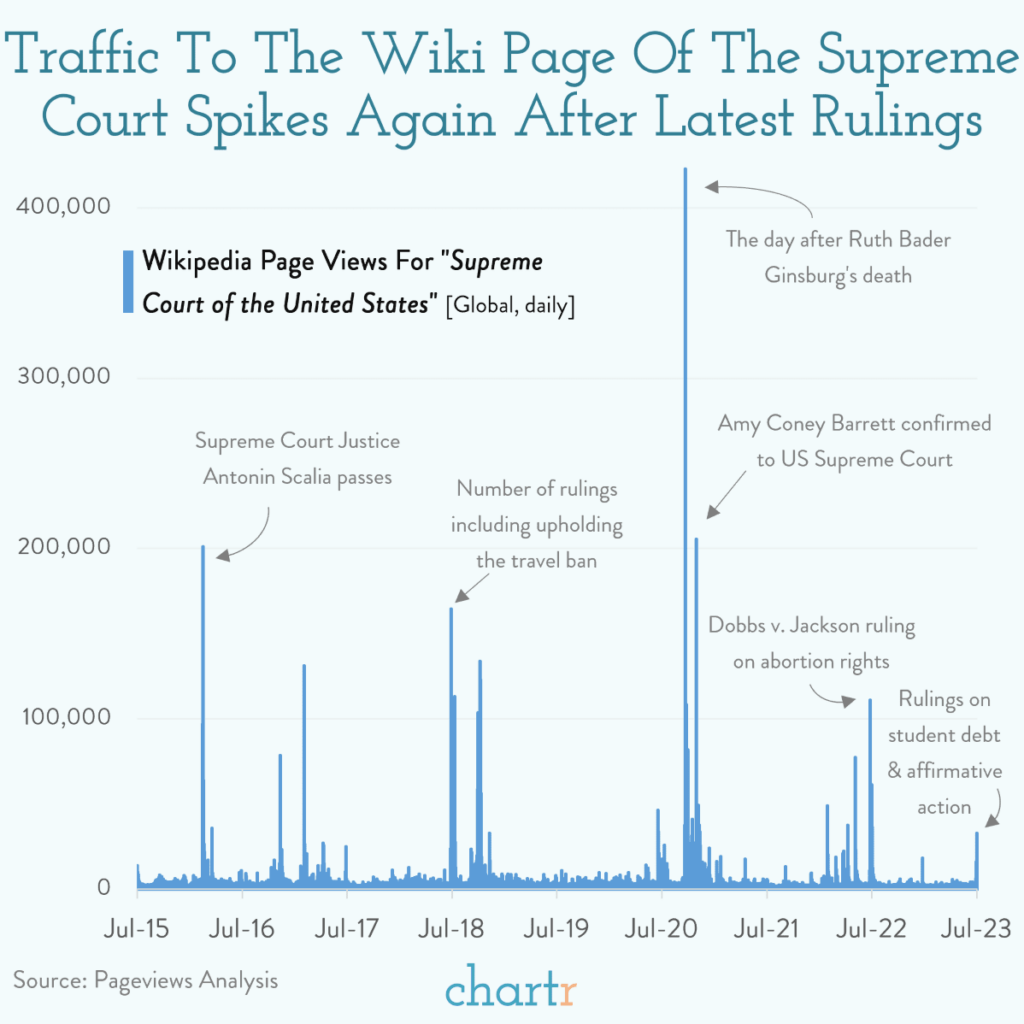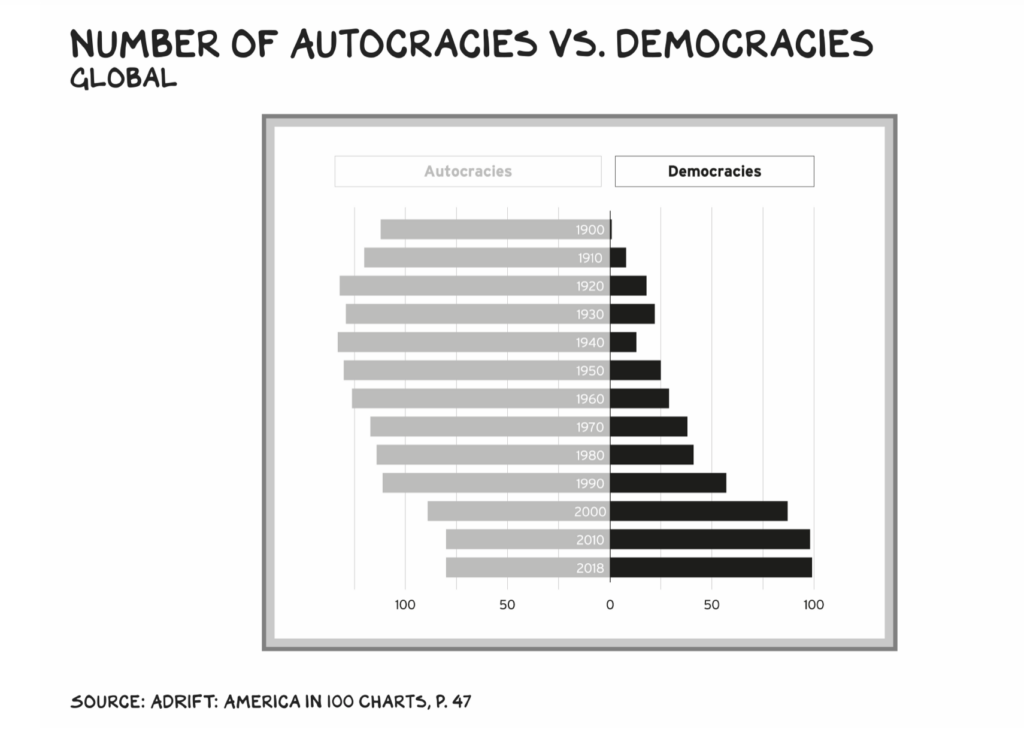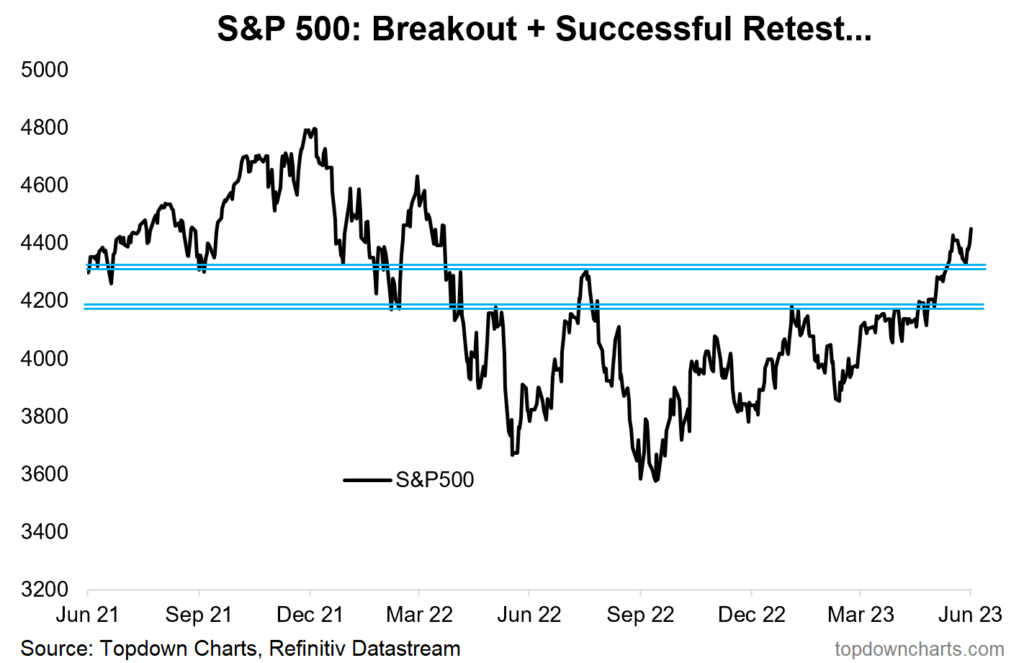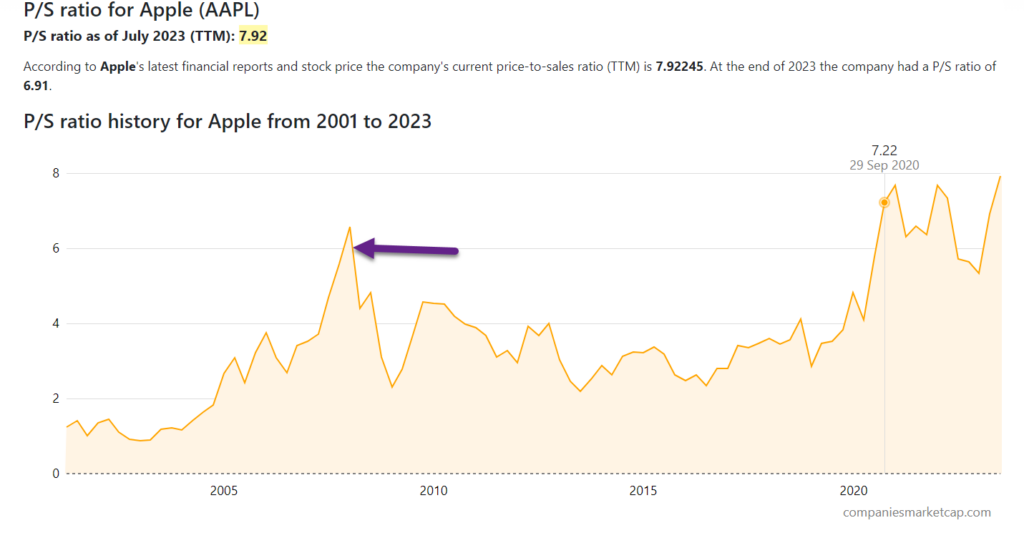1. Coinbase +75% in One Month

2. Software Catching Up….Well Below Highs but Breaks Above Two Previous Tops

3.The Rest of Asia Outperforming China 2023
WSJ By Dave Sebastian

4. 20 Year Treasury Bond ETF Update
50day and 200day sloping downward (bearish)….chart testing 2023 lows.

5. Some Economic News Rolling Over…Weekly Same Store Sales

6. Economic Roll Over….Non-Revolving Credit…Rare to See Contractions

https://twitter.com/LizAnnSonders
7. Average Maturity of Junk Bonds has Shrunk to the Lowest on Record
Advisor Perspectives Blog Executives must have hoped interest rates would swiftly return to manageable levels, but that looks increasingly improbable. In the meantime the average maturity of US and European junk bonds has shrunk to the lowest on record; while there isn’t much risky debt maturing this year, the refinancing challenges become more daunting thereafter, and businesses may decide to get ahead of the problem by restructuring debts sooner rather than later.
“You have major maturity walls coming up in 2024, ’25, and ’26,” Moelis & Co. co-founder Navid Mahmoodzadegan told investors last month. “A lot of those companies unfortunately aren’t going to be able to refinance through those maturities. And so I think there’s going to be a lot of not just bankruptcies, but a lot of balance sheet restructuring, recapitalization activity around many different names.”

The Corporate Bankruptcy Wave Will Get Even Uglierby Chris Bryant, 7/11/23
https://www.advisorperspectives.com/articles/2023/07/11/corporate-bankruptcy-will-get-uglier
8. Homeowners Staying in Home 10+ Years

https://www.linkedin.com/in/johnburns7/
9. Americans Living Along Triples

10. How to Keep Muscles Strong as You Age
Here’s why older adults naturally lose muscle mass over time and how regular physical activity and resistance training can help
By Lauren J. Young on July 2, 2023
Credit: Thomas Barwick/Getty Images
Almost everyone shrinks with old age. Many older adults have more difficulty gaining muscle than they did in their childhood and teenage years. And when it comes to maintaining that muscle, the phrase “use it or lose it” holds weight, says Michelle Gray, a physiologist and professor of exercise at the University of Arkansas.
“I work primarily with older adults who are trying to either build and/or maintain muscle throughout their life span, and really how that happens is you use it or lose it,” Gray says.
But she adds that not all hope is lost. “It really is the neurology, as well as the muscular system and the interactions between the two, that changes,” she says. “There’s a fair amount of evidence that says all of those things are still there and [that] we can retrain them.”
Several factors contribute to involuntary age-related muscle loss. The exact age people start to see muscle mass decline varies, Gray says, but many begin to see noticeable changes in their 30s. Studies suggest that muscle mass decreases by about 3 to 8 percent per decade after age 30 and at higher rates after age 60. Losing that strength may not only be frustrating in keeping up with daily activities but can also have significant health consequences.
“If you look at who’s shrinking, and how much they’re shrinking, it predicts really important stuff, like how long you’re going to live, how vulnerable you are to getting sick and having to be in the hospital, how likely you are to develop problems taking care of yourself,” says Stephanie Studenski, a geriatrician and professor emeritus at the University of Pittsburgh.
CHANGES IN MUSCLE TISSUE AND CELLS
Muscle is a dynamic tissue, Studenski explains. “Your whole life, there’s turnover. We’re growing new muscle and breaking down old muscle all the time,” she says.
There are three main types of muscle tissue: smooth muscle lines the gut wall and organs, except the heart; cardiac muscle is striated and covers the heart; and skeletal muscle, which can be found in the arms and legs, is also striated. Skeletal muscle is often the kind that’s assessed for sarcopenia, a type of muscular atrophy in which age-related loss of muscle and strength is accelerated. Sarcopenia was classified as a disease in 2016. Muscle tissue is made up of long, slim fibers, each one containing a single muscle cell. The cells produce specific proteins—actin and myosin—that cause muscles to contract and relax like rubber bands at different speeds. But as we age, there is a decline in the overall number of muscle cells—along with mitochondria, which are essential for producing and storing energy in muscle. Mutations build up over time in the cells, sometimes causing the production of defunct proteins, which makes those rubber bands overstretched or less snappy, Studenski says.
Faulty muscle proteins and mitochondria, along with some other changes with age, have been linked to the impairment of the connection between muscles and the nervous system, called the neuromuscular junction. This junction between motor nerves and muscle tissue is where brain signals are transmitted for muscle contraction and movement. Issues in communication between nerves and muscles can create weakness and a decline in muscle mass.
Changes in hormone levels are also linked to age-related muscle loss. The gradual decrease in testosterone we experience as we age, for example, can lead to a decrease in the production of muscle proteins. Poor diet and malnutrition also influence muscle loss—generally, appetite and food intake tend to decrease with age.
PHYSICAL ACTIVITY AND EXERCISE
Though natural aging plays a dominant role in sarcopenia, lack of physical activity also contributes to the loss of muscle mass. As people age, they tend to become less active, Gray says. “There are some disease processes that occur [that cause muscle loss], but in a healthy adult who is aging, it really is a decrease in physical activity throughout the life span which is driving that negative change in muscle mass,” she says.
Sedentary or less active lifestyles don’t always lead to muscle loss in older adults, but movement and exercise influence muscle size and strength. Just a short break in muscle use can cause a reduction in muscle mass, even in younger people.
Proper diet and physical activity can combat some age-related muscle loss, Gray says. Maintaining muscle comes down to continued movement. “Doesn’t matter if you garden or if you ride a bicycle like I do or if you go to the gym,” she says. “You can help maintain your muscle mass by continuing to do the things that you’re already doing.”
Research over the decades have shown that resistance training in older adults can help to increase muscle mass. Several types of resistance training and exercises can help older adults, but Gray recommends high-velocity resistance-training programs. High-velocity resistance training targets muscle power (lifting weight quickly) in addition to strength (lifting a heavier weight). Typically, high-velocity training is practiced among athletes, such as football players, but Gray says basic exercises, such as power chair stands, leg lifts and triceps extensions, can also help older adults perform daily life activities.
“I’m not saying that our older adults need to be linebackers. But think about walking very quickly. Once in a while, I catch my foot on the tile going down the hallway, and I stumble,” she says. “I do kind of trip, but I don’t fall. The reason I don’t fall is twofold: I’m fast enough to be able to get my foot out in front of me, and I’m strong enough to be able to hold my own body weight.” If one of those two things is lost, you’ll fall, she says.
Muscle loss is a common contributor to severe falls and accidents that lead to injury or physical disability in older adults. Low muscle mass from sarcopenia can impact how well individuals can cope with cancer treatment, surgeries and heart and lung problems, Studenski says. It’s why understanding the causes of muscle loss and keeping up with regular activity is important as we age, Gray says. Remember, bulk isn’t everything, she adds. Even if people don’t notice muscle mass gains through resistance training at first, “you actually get stronger long before your muscles get bigger,” Studenski says. “That exercise is doing something to the wiring to the nervous system connection to the muscle.”
Gray and Studenski say that focusing on reinforcing that “wiring” is more important than muscle size. The foundation is key to improving basic physical functions people need to take care of themselves independently, Gray says.
“Even if an older adult who I have trained doesn’t improve muscle mass, but they’re able to walk faster, climb stairs faster, get in and out of the car easier, go on hikes with their grandkids, they have an increase in quality of life,” Gray says. “That part is the most important to me.”
Lauren J. Young is an associate editor for health and medicine at Scientific American. Follow her on Twitter @laurenjyoung617 Credit: Nick Higgins
https://www.scientificamerican.com/article/how-to-keep-muscles-strong-as-you-age/
Found at Abnormal Returns Blog www.abnormalreturns.com



















